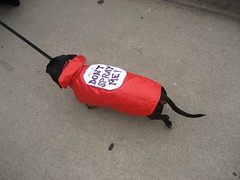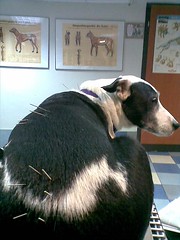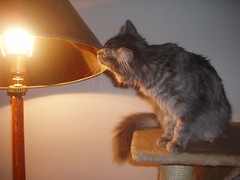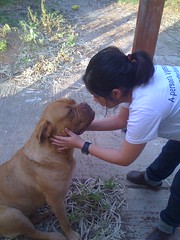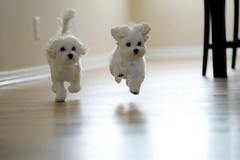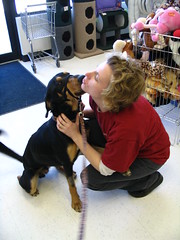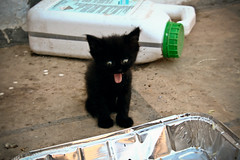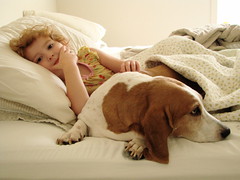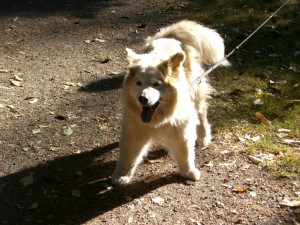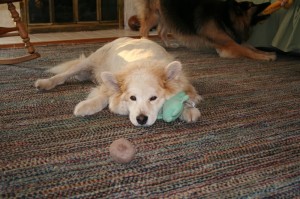The mysteries of nerves – paralysis, seizures and old age neurologic conditions Part 1 paralysis
Friday, May 1st, 2009 Did you know that one out of seven dachshunds will become paralyzed in their lifetime? That many older dogs and cats suffer from strokes and vestibular disease in their old age? That seizures are so common in some breeds that they can affect 15-20% of the breed?
Did you know that one out of seven dachshunds will become paralyzed in their lifetime? That many older dogs and cats suffer from strokes and vestibular disease in their old age? That seizures are so common in some breeds that they can affect 15-20% of the breed?
Neurologic problems are quite common in our companion animals and are some of the most expensive and frustrating problems to deal with. Often times the only way to diagnose these problems is with a MRI, which can cost $1000 and requires your animal to be under anesthesia. Many times in older animals the risk of anesthesia to too great and these problems go undiagnosed.
I am often surprised that veterinarians do not offer alternative options for working with these neurologic problems. Many times the only things western medicine can offer are expensive surgeries, a lifetime of drugs, or steroids with their many side effects.
For example, traditionally a course of treatment for paralysis, back pain or paresis in a dachshund would include steroids, months of cage only confinement and possibly an expensive surgery. While surgery is a good option in some cases, especially if there is no deep pain, it has it’s own set of risks including that sometimes it does not solve the problem and can actually make things worse.
But there are other options out there!
Let’s talk about the dachshunds first! I love working with dachshunds!
 They are some of the best responders to acupuncture out there. In fact I have never worked with a dachshund who did not respond to acupuncture. And they really seem to understand that you are helping them. I have been able to work with dachshunds who were completely paralyzed and with acupuncture and herbs have had them back to walking in as little as three acupuncture treatments! Wow!
They are some of the best responders to acupuncture out there. In fact I have never worked with a dachshund who did not respond to acupuncture. And they really seem to understand that you are helping them. I have been able to work with dachshunds who were completely paralyzed and with acupuncture and herbs have had them back to walking in as little as three acupuncture treatments! Wow!
OK just to be realistic, most take longer than that but the majority can be gotten back on there feet as long as they still have deep pain. Meaning that if you squeeze a back toe really hard with a surgical hemostat they can feel it. On average I would say it takes four to six months of weekly treatments.
Of course it’s not all dachshunds and I have worked with other animals with paralysis including cats and all breeds of dogs. Of these others, I would say about 90% have had a positive response. That’s still pretty good!
Most of these dogs I also put on a herbal I use called Back Support Formula.
 Even better is if I can get these animals with paralysis to hydrotherapy. Swimming helps keep the muscles working well while we are getting the nerves to work again and helps keep the muscle mass from wasting away. Dachshunds and other dogs can be amazing little swimmers and it gives these animals a way to move on there own if they can’t support their weight on land.
Even better is if I can get these animals with paralysis to hydrotherapy. Swimming helps keep the muscles working well while we are getting the nerves to work again and helps keep the muscle mass from wasting away. Dachshunds and other dogs can be amazing little swimmers and it gives these animals a way to move on there own if they can’t support their weight on land.
Unfortunately for cats this is not an option as you can well imagine!
I often work with Wellsprings in Seattle, Washington but there are more and more hydrotherapy clinics opening up around the world.
I can’t tell you how rewarding it is to be able to work with these amazing creatures to help their body to heal and to see them be able to walk again.
Here are some wonderful resources on disabled pets
- Handicapped Pets is a great site for disabled pet supplies and runs the best forums for people with special needs animals. I have had some time to hang out and participate on these forums and these folks not only are super educated on the options out there for working with these animals but have amazing stories about their own very loved handicapped companions. It is a great place to go for education and for support from others going through the same thing.
- One of the dogs I treat has his own blog. Buddy’s blog is a great place to check out the story of a very cool little dachshund and one of my favorite patients.
Soon to come neurologic problems in older animals and seizure disorder.


